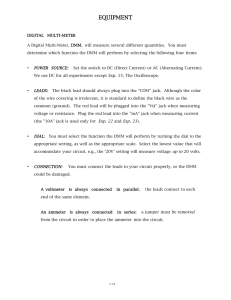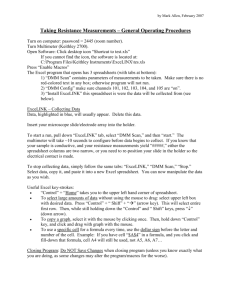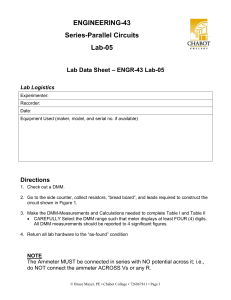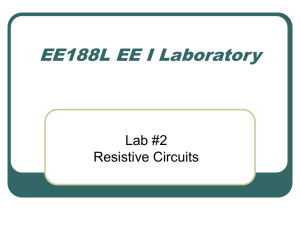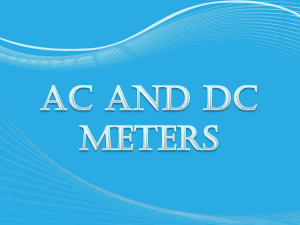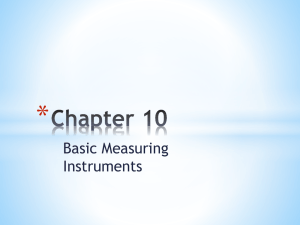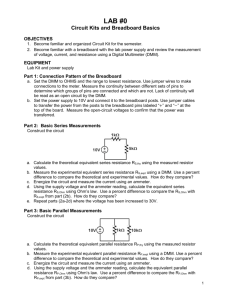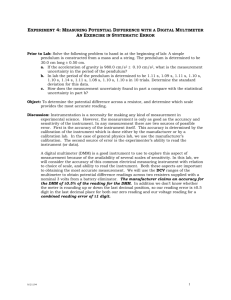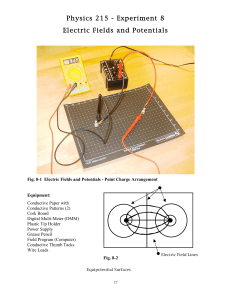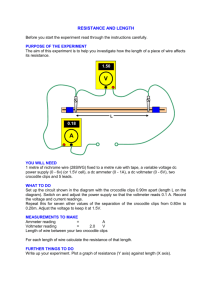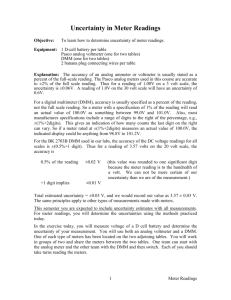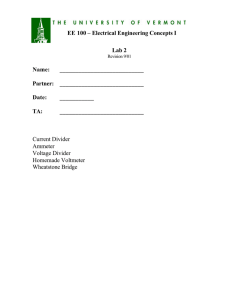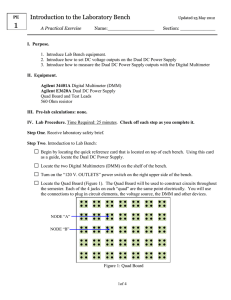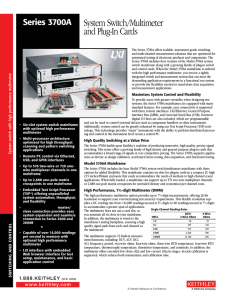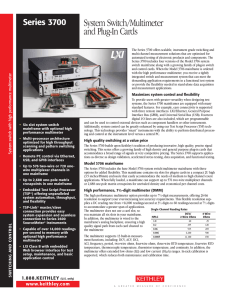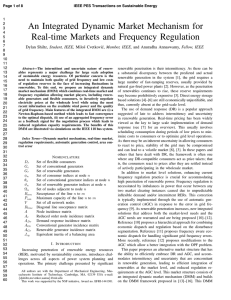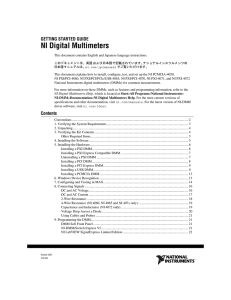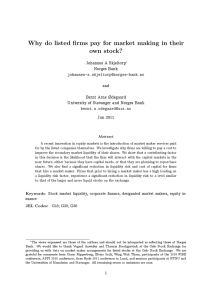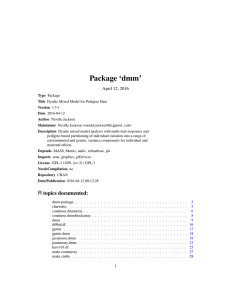Using a Digital Multimeter
advertisement
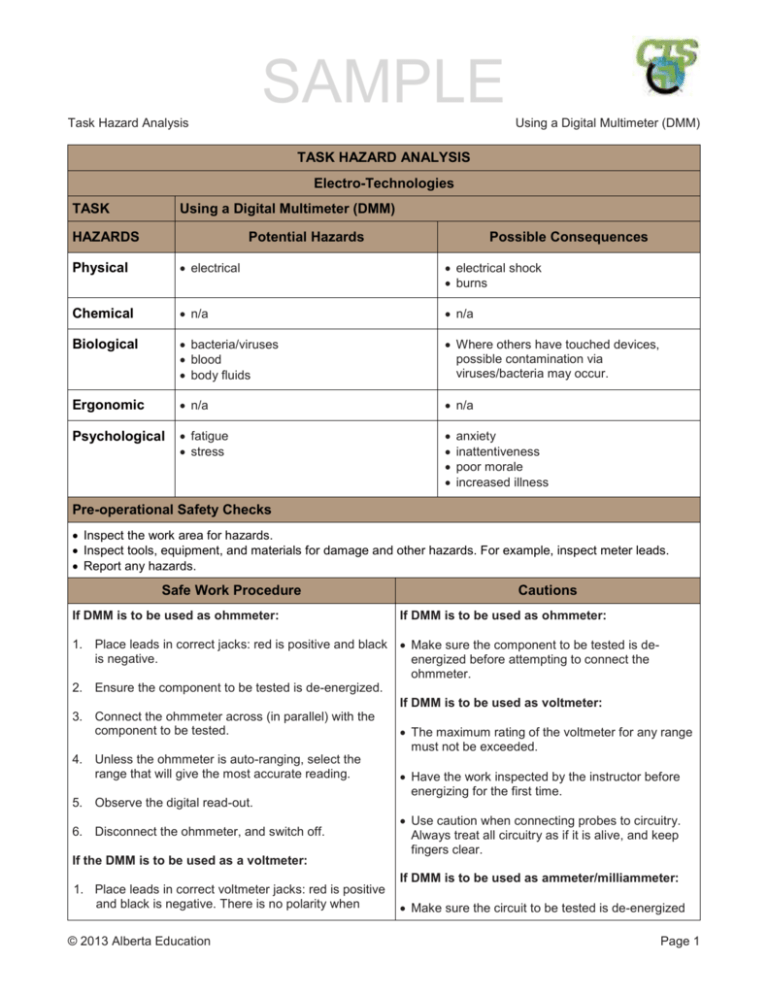
SAMPLE Task Hazard Analysis Using a Digital Multimeter (DMM) TASK HAZARD ANALYSIS Electro-Technologies TASK Using a Digital Multimeter (DMM) HAZARDS Potential Hazards Possible Consequences Physical electrical electrical shock burns Chemical n/a n/a Biological bacteria/viruses blood body fluids Where others have touched devices, possible contamination via viruses/bacteria may occur. Ergonomic n/a n/a Psychological fatigue stress anxiety inattentiveness poor morale increased illness Pre-operational Safety Checks Inspect the work area for hazards. Inspect tools, equipment, and materials for damage and other hazards. For example, inspect meter leads. Report any hazards. Safe Work Procedure If DMM is to be used as ohmmeter: Cautions If DMM is to be used as ohmmeter: 1. Place leads in correct jacks: red is positive and black Make sure the component to be tested is deis negative. energized before attempting to connect the ohmmeter. 2. Ensure the component to be tested is de-energized. If DMM is to be used as voltmeter: 3. Connect the ohmmeter across (in parallel) with the component to be tested. The maximum rating of the voltmeter for any range must not be exceeded. 4. Unless the ohmmeter is auto-ranging, select the range that will give the most accurate reading. Have the work inspected by the instructor before energizing for the first time. 5. Observe the digital read-out. Use caution when connecting probes to circuitry. 6. Disconnect the ohmmeter, and switch off. Always treat all circuitry as if it is alive, and keep fingers clear. If the DMM is to be used as a voltmeter: If DMM is to be used as ammeter/milliammeter: 1. Place leads in correct voltmeter jacks: red is positive and black is negative. There is no polarity when Make sure the circuit to be tested is de-energized © 2013 Alberta Education Page 1 SAMPLE Task Hazard Analysis measuring AC, but polarity must be observed when measuring DC. 2. Unless voltmeter is auto-ranging, the ranges are finite. Start on the highest range and work down. Using a Digital Multimeter (DMM) before attempting to open the circuit to make connections. Make sure the milliammeter/ammeter is connected in series with the load. This means the circuit under test must be opened (taken apart). 3. The voltmeter is connected in parallel (with the load). 4. Observe the digital read-out. 5. Disconnect the voltmeter. The maximum rating of the milliammeter/ammeter for any range must not be exceeded. Have the work inspected by the instructor before energizing. For all uses: 1. Use tools and equipment under competent supervision. 2. Secure loose clothing, and tie back long hair. 3. Follow the manufacturer’s instructions. 4. Follow the school safety policy. 5. Put away all tools, equipment, and materials in their proper storage areas. 6. Clean the work area. 7. Establish handwashing practices. REPORT ANY HAZARDOUS SITUATION IMMEDIATELY! If an emergency occurs while completing any task or the tool or equipment malfunctions, shut off the power immediately, follow the lock-out procedure, and get help. © 2013 Alberta Education Page 2

